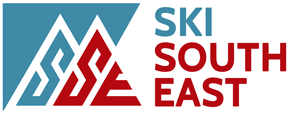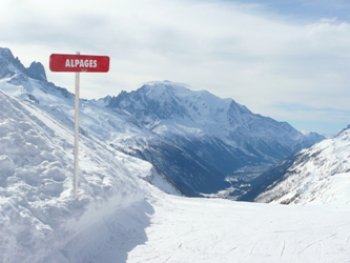Now admit it…when you read this lesson title, you were thinking, "What does knowing my zodiac sign have to do with skiing?"
 Not THOSE kinds of signs…but the SIGNS on a ski resort. You can actually get a lesson and be READY to hit the slopes…and still get into trouble by not knowing and understanding some simply signs and responsibilities. Responsibilities you ask? Afterall, you’re on the snow to leave all of your responsibilities at home. Well, not so fast. For example, let’s say you ride up the chair and get off at the top and you’re met with a couple of signs. One has a black diamond on it; one has two black diamonds on it…and the third has a green circle on it. You might be a HUGE fan of diamonds and think to yourself, "TWO diamonds are certainly twice as nice…" and opt to hit a trail that might get you hurt!
Not THOSE kinds of signs…but the SIGNS on a ski resort. You can actually get a lesson and be READY to hit the slopes…and still get into trouble by not knowing and understanding some simply signs and responsibilities. Responsibilities you ask? Afterall, you’re on the snow to leave all of your responsibilities at home. Well, not so fast. For example, let’s say you ride up the chair and get off at the top and you’re met with a couple of signs. One has a black diamond on it; one has two black diamonds on it…and the third has a green circle on it. You might be a HUGE fan of diamonds and think to yourself, "TWO diamonds are certainly twice as nice…" and opt to hit a trail that might get you hurt!
I can hear you now; you’re saying "Gosh man EVERYONE knows that a black diamond is for expert skiers only. That might be true, but a lot of new skiers hit the trail and ski down to a point and stop in the middle of a slope to rest – not realizing that people up the slope from them can’t see them just over that ridge – until it’s too late! So you have to use some common sense and know your responsibility on the slopes.
YOUR RESPONSIBILITY CODE
Skiing/snowboarding can be enjoyed in many ways. At ski areas you may see people using alpine, snowboard, telemark, cross country or other specialized equipment, such as that used by disabled or other skiers/snowboarders. Regardless of how you decide to enjoy the slopes, always show courtesy to others and be aware that there are elements of risk in skiing/snowboarding that common sense and personal awareness can help reduce.
Observe the code listed below and share with other skiers/snowboarders the responsibility for an overall great experience.
1. Always stay in control, and be able to stop or avoid other people or objects.
2. People ahead of you have the right of way. It is your responsibility to avoid them.
3. You must not stop where you obstruct a trail, or are not visible from above.
4. Whenever starting downhill or merging into a trail, look uphill and yield to others.
5. Always use devices to help prevent runaway equipment.
6. Observe all posted signs and warnings. Keep off closed trails and out of closed areas.
7. Prior to using any lift, you must have the knowledge and ability to load, ride and unload safely.
KNOW THE CODE. IT’S YOUR RESPONSIBILITY.
This is a partial list. Be safety conscious. Officially endorsed by: NATIONAL SKI AREAS ASSOCIATION
MORE HELPFUL SAFETY NOTES
It never hurts to get a hold of a trail map before you ski off the top of a mountain. At some of the smaller resorts of the Southeast and Mid Atlantic, this is not quite as important as it might be if you’re skiing for the first time at Whister! However, some of the larger resorts such as Snowshoe Mountain is spread out and you might start down a trail that leads you nowhere except straight down a steep hill that you’re not prepared for. So it’s never a bad idea to have a trail map with you when you ski.
Also, larger resorts can get pretty complicated and confusing. To make sure that you don’t get stuck or lost in a resort and are able to find your way back before the lifts close, secure a Trail Map. Most Snow Resorts will give you a Trail Map as you purchase your day pass.
Know Your Signs…
Green is for beginners and is the easiest to ski for first timers. Trails marked with a green dot are also great for more experienced skiers and snowboarders to work on carving their turns.
Blue Squares are the next step up in difficulty. These are also known as "intermediate runs" and are usually relatively easy for most skiers to hit.
Black Diamonds are for experienced or expert skiers and snowboarders.
Double Blacks are VERY Difficult runs and should be avoided unless you know what you’re doing.
A lady once emailed me that she thought that one of the trails at one of the Southeast’s resorts should have been labeled NOT with a black diamond but a scull and crossbones!
She wrote, "I’m a pretty good skier and I’ve skied some of the tougher trails at Killington, etc and therefore I figured since I was skiing in North Carolina that they certainly couldn’t be as tough as trails at Killington. So I tried it. Please tell them to mark that trail more accurately. Scull and Crossbones would work!"
You should know that trail markings are INTERNATIONAL and a Black Diamond at Snowshoe or Sugar Mountain is every bit as difficult as a Black in China. Runs out west or the FAR WEST might be a heck of a lot LONGER, but black is black and double black isn’t "twice as nice" – it’s twice as hard!
Before I receive a lot of email from people claiming how tough and black diamond is at "XYZ Resort" as compared to a black at Wintergreen or one of the other Southeast or Mid Atlantic resorts – let me state the following:
When in doubt don’t ski it! Between different countries and different resorts there can be various interpretations on the definition of beginner, intermediate and expert trails. No matter how experienced you are, it is always wise to work yourself up by starting at the easier runs and then slowly making your way to more difficult slopes. When in doubt ask people with more experience at the resort for details on the slopes.
…and since I am covering safety, let me take a moment and cover the use of helmets. If you’re taking your kids out skiing for the first time…put a helmet on them. To read more about the wearing of helmets click here

